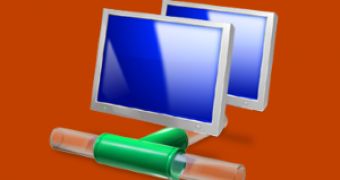Although the Server Message Block remote file was originally introduced in the 1980's, the first major overhauling it suffered was with the availability of Windows Vista RTM in 2007. SMB2, as it was labeled in Vista RTM, was subsequently updated the following year, with the introduction of Windows Vista Service Pack 1, and Windows Server 2008 SP1. However, even with the advent of SMB2, Windows operating systems continue to be interoperable with platforms that support SMB1, as the latest version of the remote file protocol has been tweaked in order to provide full support for the connection setup mechanisms of its precursor.
“A key improvement in SMB2 is the way it makes it easy for clients to send a number of outstanding requests to a server. This allows the client to build a pipeline of requests, instead of waiting for a response before sending the next request. This is especially relevant when using a high latency network,” Jose Barreto, technology evangelist with the Storage Evangelism Team, explained.
“SMB2 uses a credit based flow control, which allows the server to control a client’s behavior. The server will start with a small number of credits, and automatically scale up as needed. With this, the protocol can keep more data 'in flight' and better utilize the available bandwidth.”
At the same time, the sheer volume of outstanding requests Vista RTM and SP1 can send to a server is just one aspect of the evolution synonymous with the move from SMB1 to SMB2. According to Barreto, Microsoft has also simplified the complexity of the commands and subcommands of the protocol, increased the size of the reads and writes, enabled folder and file properties to be cached, boosted message signing, delivered an extension mechanism and support for symbolic links.
“SMB (Server Message Block) is a remote file protocol commonly used by Microsoft Windows clients and servers that dates back to 1980’s. Back when it was first used, LANs speeds were typically 10Mbps or less, WAN use was very limited, and there were no Wireless LANs. Network security concerns like preventing man-in-the-middle attacks were non-existent at that time. Obviously, things have changed a lot since then. SMB did evolve over time, but it did so incrementally and with great care for keeping backward compatibility. It was only with SMB2 in 2007 that we had the first major redesign,” Barreto recalled.

 14 DAY TRIAL //
14 DAY TRIAL //